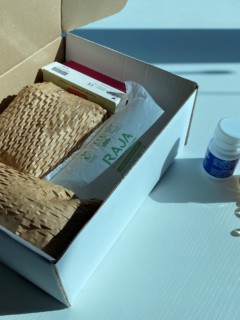Are your hands constantly exposed to risks and trauma in your work?
Do they often come into contact with sharp objects or chemical substances?
Protect them with the right work gloves!
First make sure you choose the right glove size, only then will the protection be optimal and you will gain in comfort and dexterity.
Our size guide will help you find the perfect ones for you.
► How to choose glove sizes?
To know the correct glove size you need two things: your hand and a tape measure.
Measure the widest point of your hand (usually the knuckles) with the tape measure.
The circumference in cm then determines the size of the gloves you need to buy:

Remember that glove sizes are often expressed in inches!
Also, if you are straddling two sizes, we recommend that you choose the smaller one because gloves tend to loosen over time.
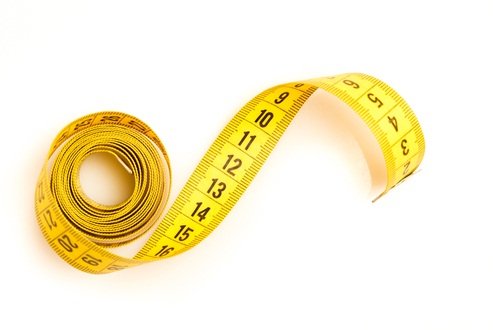
Don’t have a tape measure handy? Follow the instructions in the image below.
Place your right hand on the blue bar with the red line between your thumb and forefinger.
The number on the right hand indicates the glove size.
You have to look at the image from a PC screen and the zoom on the page must be 100%!

► How to choose the right gloves for your work?
Work gloves are part of the Personal Protective Equipment (PPE) for the upper limbs, devices designed to protect the upper limbs and in particular the hands from various risks. Each glove has different characteristics.
Now that you have chosen the right size, you need to figure out which gloves are best suited for your activity.
The international symbols below will help you in your decision:

► C E Certification
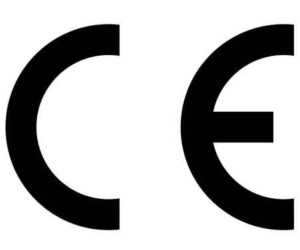
CE stands for Conformité Européenne and is awarded to products that comply with European regulations. These rules apply to, among other things, household appliances, toys and personal protective equipment.
► European standard for protective gloves Standard EN 420

This European Standard describes some basic requirements for safety gloves.
Such as:
- Work gloves must not contain substances that could cause allergies.
- Gloves must be designed according to the size of the European hand.
- pH values must always be as neutral as possible.
► Do you work with machines? Standard EN 388
This symbol indicates work gloves that protect against mechanical risks: cutting with a blade, tearing, sanding and even punctures. Below or next to this symbol you will find 4 digits indicating performance levels. These are expressed from 0 (low protection) to 4 or 5 (maximum protection). If, on the other hand, you find an X instead of the number, it means that they have not been rated for this characteristic.

Some gloves that comply with this standard are:
| Name | Advantage | Examples of use | Picture |
| Coated nitrile gloves | Highly abrasion resistant. Nitrile coating on palm and fingertips. | Oily environments, logistics, warehouse, automotive, plastics, textile. | 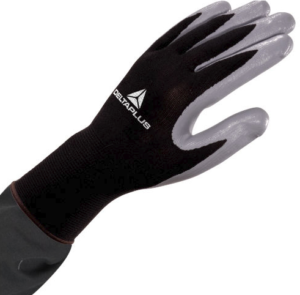 |
| High-Tech fluo glove | Very comfortable. Breathable, limits perspiration. |
Construction, crafts, light industry, logistics. | 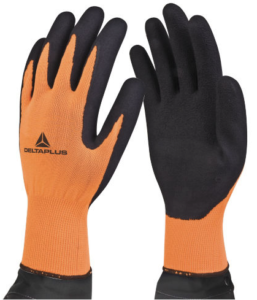 |
| Coated polyurethane glove | Good abrasion and tear resistance, excellent durability. Good grip. |
Handling of small parts, handicrafts, DIY. | 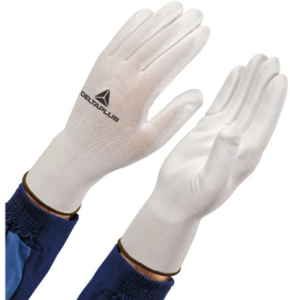 |
| Cow grain leather glove | For prolonged and intensive use. Good mechanical resistance, long life. | Industry, building mechanics, carpentry, goods handling. | 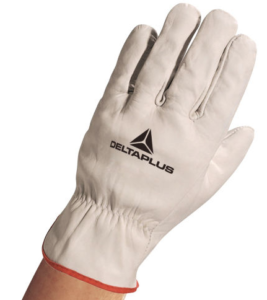 |
| Cut-resistant gloves | Molarly abrasion-resistant. Breathable, elastic, flexible. Polyurethane coating on palm and fingertips. Washable. |
Cutting work, construction, light industry, logistics. | 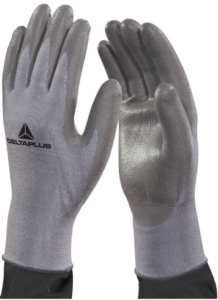 |
► Work with chemicals or micro-organisms?
Standard EN 374
If you often come into contact with chemicals or micro-organisms, you should only use gloves bearing the symbols below.

Gloves that protect against micro-organisms and chemicals are available in different materials.
We recommend:
| Name | Advantages | Examples of use | Picture |
| Latex gloves | Ideal for delicate and short-term work. Comfortable to use: good grip in wet and dry conditions, excellent sensitivity. Very comfortable, light and elastic. | Talc: agriculture, light industry, food industry or hygiene. Non talc treated: examination laboratories, diagnostics, therapy, medical. Minimises the risk of allergies. |
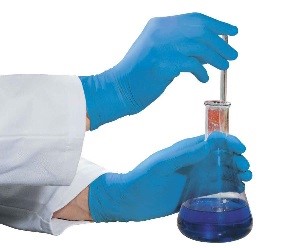 |
► Powdered or non-polished gloves?
Talcum powder makes gloves easier to put on, and helps absorb moisture and sweat for optimal comfort. Powdered gloves are comfortable but are not always recommended; in the food industry or hospitals they are best avoided.
►Which gloves are best suited for working with delicate or small products?
Do you work with very delicate products, such as glass, jewellery or electronics?
Try vinyl gloves
| Name | Advantages | Examples of use | Picture |
| Vinyl gloves | Disposable: disposable glove, made of high quality vinyl. Talc treated. Cheaper than latex or nitrile. Protects against acids, bases, oils and greases. Long life: 5 years from date of manufacture. Suitable for food use. |
Fine and delicate handling, polishing of jewellery, precision assembly, laboratory work, paintings, inks, dyes and epoxy resins, hairdressing. | 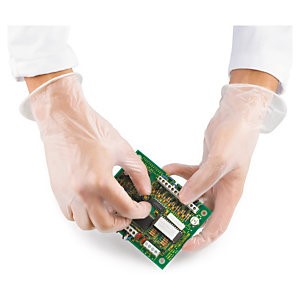 |
► Which gloves are suitable for low-risk activities?
Perfect gloves for meticulous operations.
| Name | Advantages | Examples of use | Image |
| Cotton interlock gloves | Elife fingerprints and dirt stains. Practicalseamless elastic cuffs. Can be used alone or under another glove for maximum comfort. 100% cotton. | Handling delicate objects, finishing operations, photo labs. | 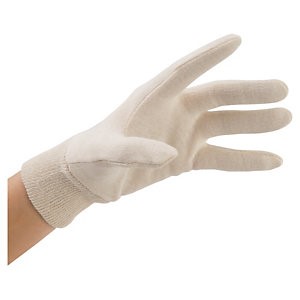 |
| Nitrile gloves | Single-use: disposable glove made of 100% blue nitrile. Non-polished. Comfortable: ribbed cuff. Long life: 3 years from date of manufacture. Micro-rough surface. Suitable for food use. Suitable for people with latex allergies. Similar to latex but more durable. |
Jewellery polishing, precision assembly, laboratory work, hairdressing, food preparation, veterinary, laboratory and non-sterile medical examinations and treatments. | 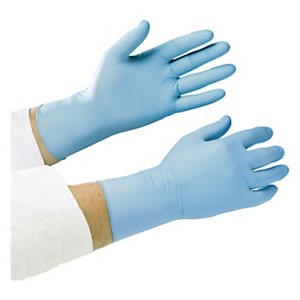 |
Think you’ve found the gloves that are right for you but still have doubts? Call848 815 815.
Remember that we ship within 24/48h!













